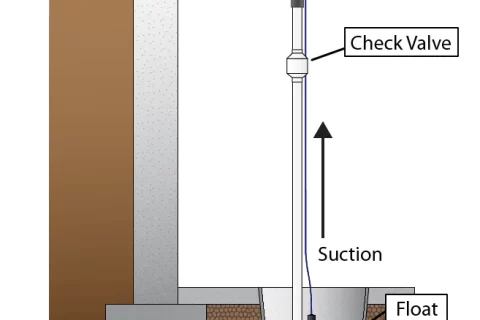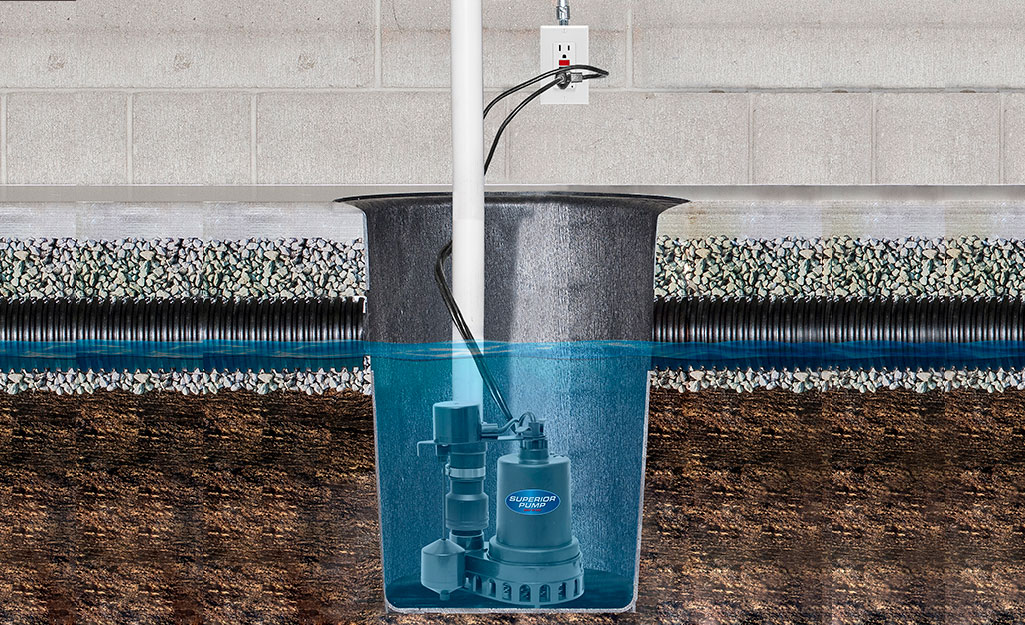Crawl spaces are often where moisture is trapped due to poor ventilation, leading to mold growth. To prevent this, consider crawl space sump pump installation. Check if the pump is functioning correctly, and if not, consult a professional plumber. Mold can be harmful to your health and damage your home’s insulation.
Installing a sump pump in your crawl space is essential to avoid water damage. Without it, water can accumulate and cause various problems. Protect your crawlspace by using a sump pump.
There are numerous benefits of crawl space sump pump installation:
1. Preventing water accumulation in your crawlspace.
2. Removing excess dirt and debris.
3. Keeping your crawlspace dry.
4. Protecting your foundation from water damage.
5. Improving your house’s air quality.
6. Reducing fire risks.
7. Saving money on energy bills.
8. Increasing your property’s value.
9. Ensuring safety for your family, pets, and livestock.
Why Do You Need a Crawl Space Sump Pump?
If you have a crawlspace or basement, you may have noticed water accumulation due to cracks in the foundation, windows, or doors. Proper sealing is essential to avoid water entering your home.
Improper drainage can lead to water seeping into your home, causing structural damage and potential flooding in your crawlspace.

Installing A Sump Pump In A Crawl Space
Installing a sump pump in a crawl space is a common home improvement project to prevent water damage. Learn what a sump pump is and how it works.
To install a sump pump, follow these steps:
1. Measure the size of the crawl space
Ensure the crawl space can accommodate the sump pump to remove all the water.
2. Check the location of the sump pump.
Place the sump pump near the center or either end of the crawl space. The ideal location is at least 3 feet below the grade line to prevent water flow into the house.
3. Check for obstructions in the crawl space.
Remove pipes, electrical wires, furniture, etc., to avoid blocking water flow.
Ensure safe electrical wiring in the crawl space before starting the installation.
Prepare the installation area by removing grass, weeds, and sharp objects.
Disconnect and remove the existing sump pump if applicable.
4. Create the sump pump pit
Dig a hole about 2 feet deep and wide, ensuring it can hold the sump pump securely.
5. Place the sump pump in the pit.
Position the sump pump to face the drain pipe and secure it with concrete blocks.
Fill the crawl space with gravel, allowing for moisture absorption. Add about 2 inches (5 cm) of gravel around the perimeter and cover it with sand.
6. Connect the sump pump to the drainpipe
Use a coupling to attach the sump pump to a PVC pipe. Then, attach the drain plug to the bottom of the sump pump using a hose clamp.
7. Install the cover
Protect the sump pump with a plastic or metal lid to prevent dirt and debris. Seal the crawl space with waterproofing material.
8. Test the sump pump
Ensure the pump is working correctly by turning on the power supply. For troubleshooting, refer to our article on troubleshooting sump pumps if needed.
Sump Pumps For Small Spaces
For limited crawl space access, consider using a sump pump for smaller spaces. These pumps are affordable, usually under $100, and easy to install and maintain.
Sump Pump Installation Cost
Installing a sump pump costs between $400 to $600, with the price varying based on the type of sump pump you choose.
Types Of Sump Pump
There are two main types of sump pumps: Submersible and Pedestal.
Submersible Sump Pump
A submersible sump pump is installed directly under the floor slab, with its motor inside the sump tank. When excess water is detected, the pump activates and sends water to the drain pipe.
Pedestal Sump Pump
In a pedestal pump, the motor is situated outside the sump tank. Water flows into the tank through a tube connected to the drain pipe, and the pump pushes the water out.
Sump Pump Maintenance
Regularly inspecting and cleaning your sump pump is essential to ensure its efficient operation. You can either do it yourself or hire a professional.
Cleaning Your Sump Pump
To clean your sump pump, remove the filter screen, clean the impeller and fins using soap and warm water, and rinse them thoroughly. Dry with paper towels.
If the pump needs repair, consider replacing the impeller before the entire pump.
Sump Pump Repair
To fix a leaking sump pump, first, ensure there are no blockages in the drain line. Check the connections and inspect the electrical wiring for signs of corrosion.
If the problem persists, it’s best to call an expert.
Bottom Line:
Sump pumps are essential tools for homeowners in flood-prone areas. Installing one can protect your home from water damage and prevent floodwater from entering your house.
A sump pump is crucial for any home, ensuring your basement stays dry. To install one correctly, follow the above instructions carefully to avoid future problems. Regular maintenance and cleaning are also vital to keep your sump pump functioning efficiently.




